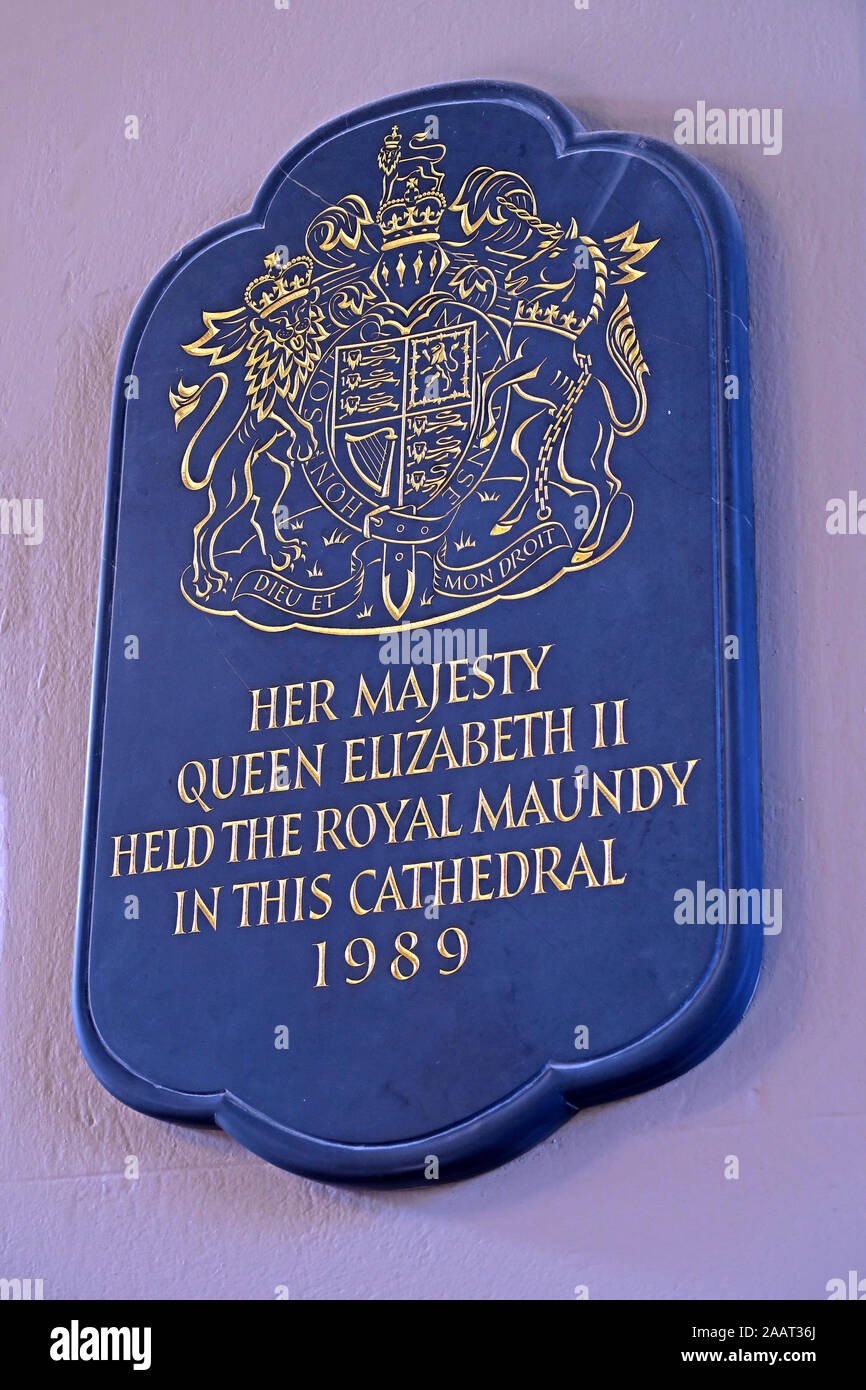Her majesty Queen Elizabeth II, held the Royal Maundy, in This Cathedral, 1989 - St Philips Cathedral,Colmore Row, Birmingham B3 2QB

Image details
Contributor:
Tony Smith / Alamy Stock PhotoImage ID:
2AAT36JFile size:
57.1 MB (3.2 MB Compressed download)Releases:
Model - no | Property - noDo I need a release?Dimensions:
3648 x 5472 px | 30.9 x 46.3 cm | 12.2 x 18.2 inches | 300dpiDate taken:
19 October 2019Location:
Colmore Row, Birmingham, England, B3 2QBMore information:
The Maundy ceremony dates back to the Middle Ages, when the monarch gave coins to the poor. In 1989, the Maundy Ceremony was held in St Phillip's Cathedral in Birmingham. This booklet is for the Order of Service for the Maundy distribution ceremony - more info at http://www.bmagic.org.uk/objects/2003.0192.16 Royal Maundy is a religious service in the Church of England held on Maundy Thursday, the day before Good Friday. At the service, the British monarch or a royal official ceremonially distributes small silver coins known as "Maundy money" (legally, "the King's Maundy money") as symbolic alms to elderly recipients. The coins are technically legal tender, but typically do not circulate due to their silver content and numismatic value. A small sum of ordinary money is also given in lieu of gifts of clothing and food that the sovereign once bestowed on Maundy recipients. The name "Maundy" and the ceremony itself derive from an instruction, or mandatum, of Jesus Christ at the Last Supper that his followers should love one another. In the Middle Ages, English monarchs washed the feet of beggars in imitation of Jesus, and presented gifts and money to the poor. Over time, additional money was substituted for the clothing and other items that had once been distributed. Beginning in 1699 the monarch did not attend the service, sending an official in his place. The custom of royal representatives washing the feet of beggars did not survive the 18th century. Maundy money is struck in denominations of one penny, two pence, three pence, and four pence. Until the 18th century the coins given were from the circulating coinage, and it was not until the latter half of the century that the four Maundy coins developed as distinct, noncirculating pieces. The obverse design of the coins features the reigning monarch. The reverse, with a crowned numeral enclosed by a wreath, derives from a design first used during the reign of King William III and Queen Mary II,